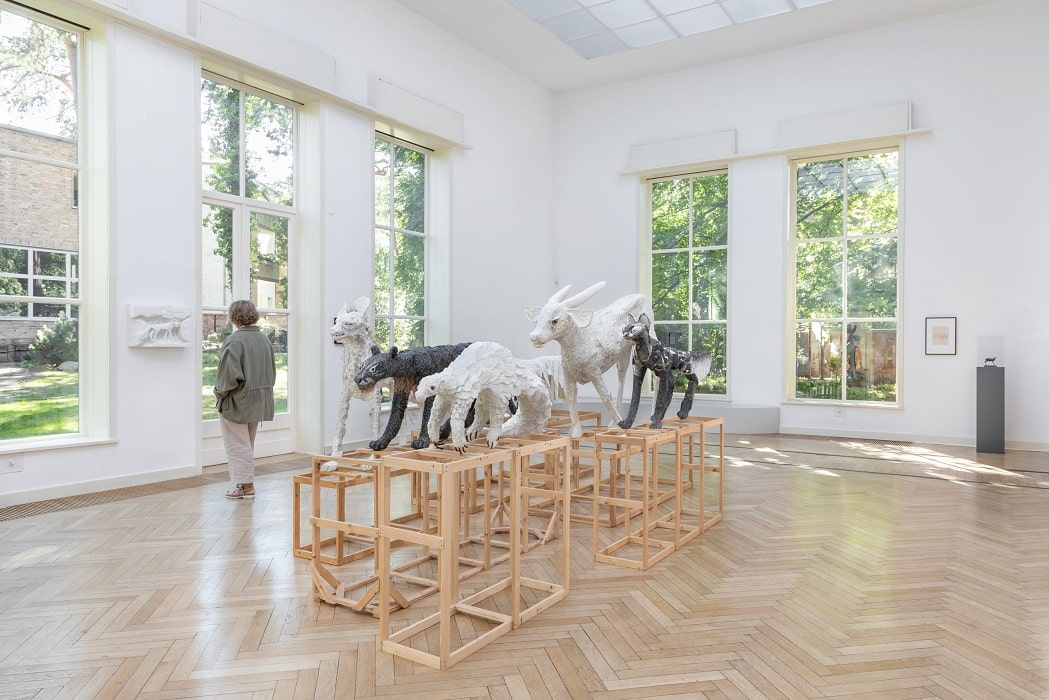From 14 September 2023, the Georg Kolbe Museum will be showing the exhibition “In Paradise, the Snow Falls Slowly” by artist Lin May Saeed as a dialogue with Renée Sintenis. Styrofoam creatures climb out of their cages and colonise the Georg Kolbe Museum, wire lobsters free themselves from captivity with their scissors, figures taken from ancient sagas reflect the close relationship between animals and humans in Arabic-language poetry. The opening will take place as part of the Berlin Art Week on 13 September 2023 from 6 pm.
Fig. above: Exhibition view “Lin May Saeed. In Paradise the Snow Falls Slowly. A dialogue with Renée Sintenis” Georg Kolbe Museum, 2023, Photo: Enric Duch
The German-Iraqi artist Lin May Saeed (1973, Würzburg – 2023, Berlin) has spent a good 20 years exploring the lives of animals and their role in a world dominated by humans today. The Georg Kolbe Museum is showing her first solo museum exhibition in Germany. With sculptures, reliefs, expansive silhouettes and drawings, the sculptor created a new visual language of solidarity and coexistence between species. In the exhibition, Lin May Saeed’s work enters into an artistic dialogue with works by Renée Sintenis (1888, Glatz1965, West Berlin). This central sculptress of modernism, creator of the Berlin Bear, which is still awarded annually at the Berlinale, was also searching at the time for a language and a way of depicting the essence and radiance of animal creatures. Renée Sintenis celebrated her breakthrough in the 1920s with small-format animal sculptures, of which Lin May Saeed made a selection for the exhibition.
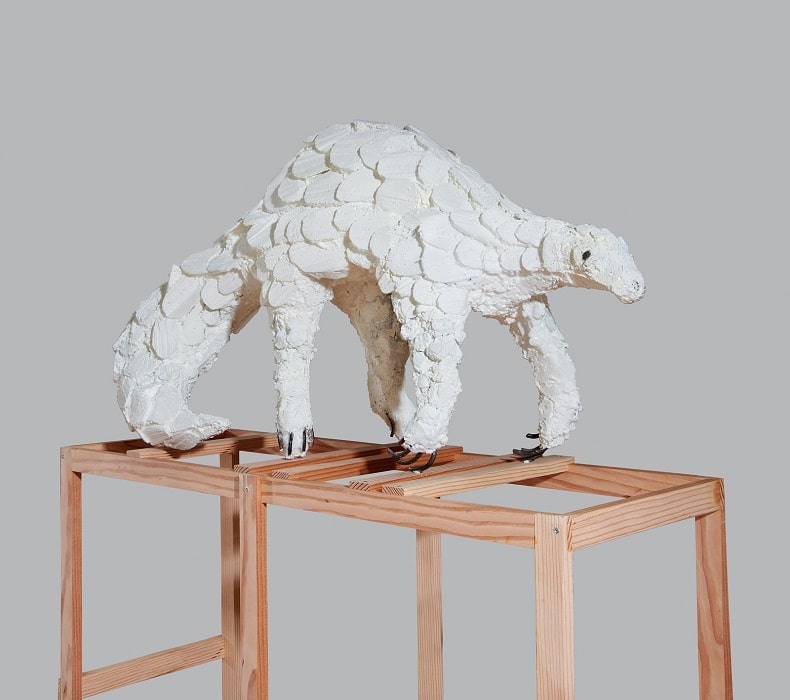
With great empathy, broad cultural-historical references to fairy tales and fables, but also with humour, Lin May Saeed’s work tells old and new stories of the subjugation and liberation of animals and their coexistence with humans. A Pangolin (2020) is one of Saeed’s styrofoam animals whose base doubles as a transport crate and now inhabits the former sculptor’s studio in the Georg Kolbe Museum. The pangolin, which came to sad notoriety in the wake of the Covid19 pandemic, is one of the most smuggled animals in the world and is threatened with extinction. Although trade is banned, the black market flourishes, as the animal is easy prey – it curls up into a ball in dangerous situations and can easily be caught by poachers. In the distant future, however, Lin May Saeed’s animal sculpture Pangolin will still exist. For unlike the classic materials of sculpture, such as bronze and marble, Saeed’s preferred material, polystyrene, is not biodegradable. Thus, the artist saw the petroleum-based material as a warning in view of highly topical environmental problems, but at the same time used it as an emancipatory means that is easy to work with even without great physical strength. Her works purposefully reveal processes of their construction in their provisional, seemingly naïve quality and with the chosen “poor” materials.
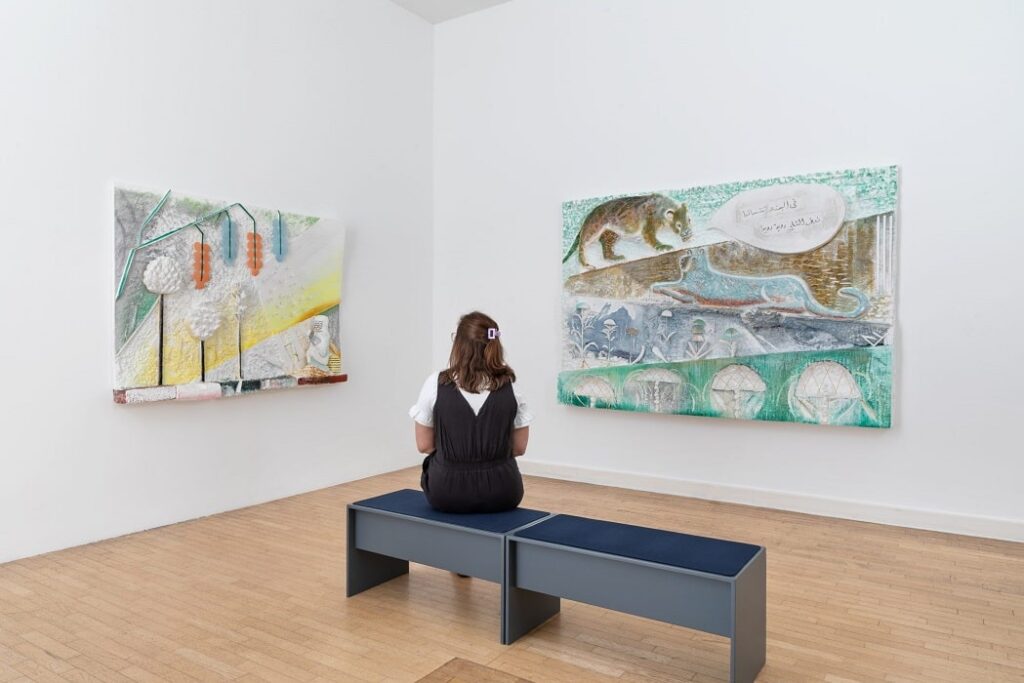
„One of the most fascinating facts of Lin May Saeeds work is the fact that you cannot identify in the forms, whether these are ancient or highly contemporary forms, (…) it really gets the core of, in our opinion, what distinguishes essentially great art from other works,”
is how the artist collective Slavs and Tatars comments on some of Lin May Saeed’s works in the new format Artists on Artists. In the audio guide created for the exhibition (available from 13 September on the platform bloombergconnects. org), the collective explains how Saeed succeeded both thematically and formally in creating references to the ancient relief art of Mesopotamia, such as with Mureen/Lion School (2016), in processing ancient content such as the Epic of Gilgamesh with sculptures such as Enkidu and Jackel (2007), or religious content such as the Christian-Islamic story of the Seven Sleepers of Ephesus in Seven Sleepers (2020), and translating it into a contemporary reflection on the relationship between human and non-human animals.
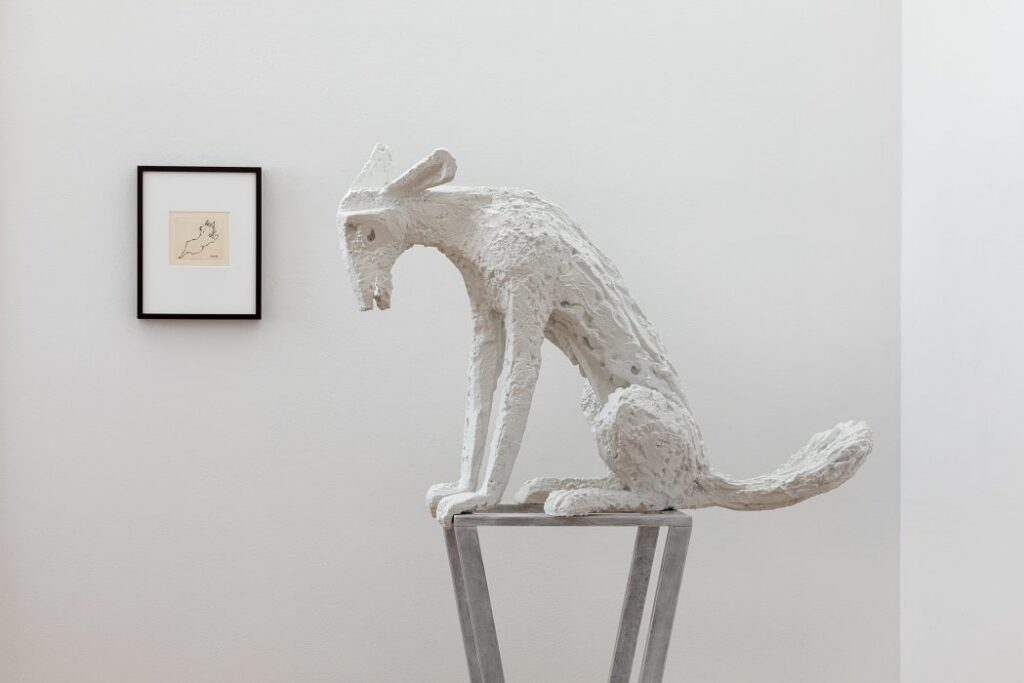
The artist’s cross-cultural narratives draw from Western traditions and her German-Jewish-Arab heritage, making references as diverse as between the Animal Liberation Front, Expressionist woodcuts and ancient Mesopotamia. In terms of content and form, Lin May Saeed’s work spans an arc from prehistory to the present in its yet always hopeful critique of the present.
In the last 100 years, the social image of animals has changed dramatically. The animal liberation movement that emerged in the 1970s, which influenced Lin May Saeed’s approach, mass extinction of species or the role of industrial factory farming in the progression of climate change illustrate the particular topicality and urgency of rethinking our perception of and treatment of other living beings. Often temporally displaced, Lin May Saeed’s subjects reference atavistic animisms while simultaneously imagining posthuman conditions in which the boundaries of gender, place and species are fluid, if not dissolved. In these ambivalences, Lin May Saeed’s animals reach the Georg Kolbe Museum to reoccupy its spaces and announce their world in ours.
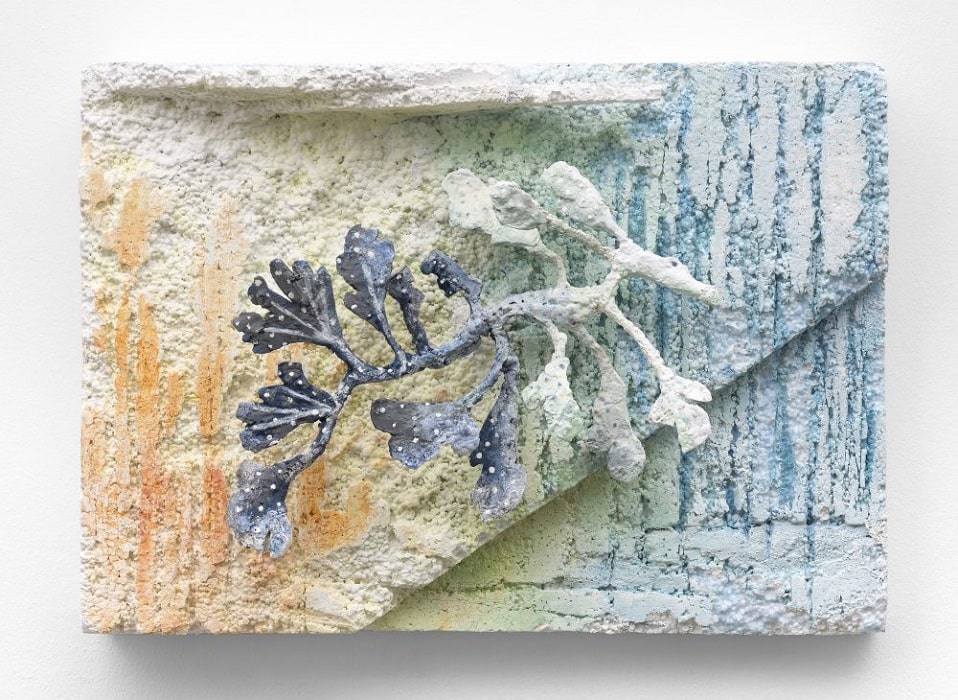
The exhibition was created in close collaboration with Lin May Saeed, who passed away on 30.8.2023 after a long illness.
The exhibition shows sculptures made of Styrofoam, steel and bronze, reliefs and a video, as well as drawings by both artists, and is accompanied by a comprehensive educational and supporting programme on animality, animal ethics and animal rights.
The Georg Kolbe Museum houses Georg Kolbe’s correspondence with other artists of his time. For the new format Artists on Artists, the artists’ collective Slavs and Tatars (founded 2006, Berlin) has created an audio guide with their favourite works by Lin May Saeed for the exhibition, which you can access on Bloomberg Connects from 13 September 2023.
The Museum Café Benjamine offers changing dishes inspired by Lin May Saeed’s publication Recipies from Iraq for the duration of the exhibition and is organising a culinary evening with a vegan menu on 14.2.2024.
With this exhibition, Dr. Kathleen Reinhardt, the director of the Georg Kolbe Museum since December 2022, is making her curatorial debut. Curatorial assistance: Eva da Silva Antunes Alves and Emma Borwieck.
Artists’ biographies
Lin May Saeed (1973, Würzburg – 2023, Berlin) was a German-Iraqi artist who lived and worked in Berlin. She studied at the Düsseldorf Art Academy and worked on the theme of animal justice for 20 years. In her sculptures, reliefs, drawings and expansive murals, she created narratives that made different references between the Animal Liberation Front, expressionist woodcut and ancient Mesopotamia, often executed in Styrofoam. In 2000 she received a scholarship from the Studienstiftung des Deutschen Volkes and in 2011 the Peter Mertes Scholarship from the Bonner Kunstverein. Her recent solo exhibitions have been at the Clark Institute, Williamstown (2020); Studio Voltaire, London (2018) and Lulu, Mexico City (2017). She has been included in group exhibitions including Museum Frieder Burda, Baden-Baden (2023); Museo Castello di Rivoli, Turin; Fondation Carmignac, Porquerolles; Aspen Art Museum (all 2020); Palais de Tokyo, Paris; 33. Ljubljana Biennale of Graphic Arts, Slovenia and Villa Merkel, Esslingen (all 2019); Schirn Kunsthalle, Frankfurt; mumok, museum moderner kunst, Vienna (all 2018); Köln Skulptur (2017) and the Bonner Kunstverein (2012).
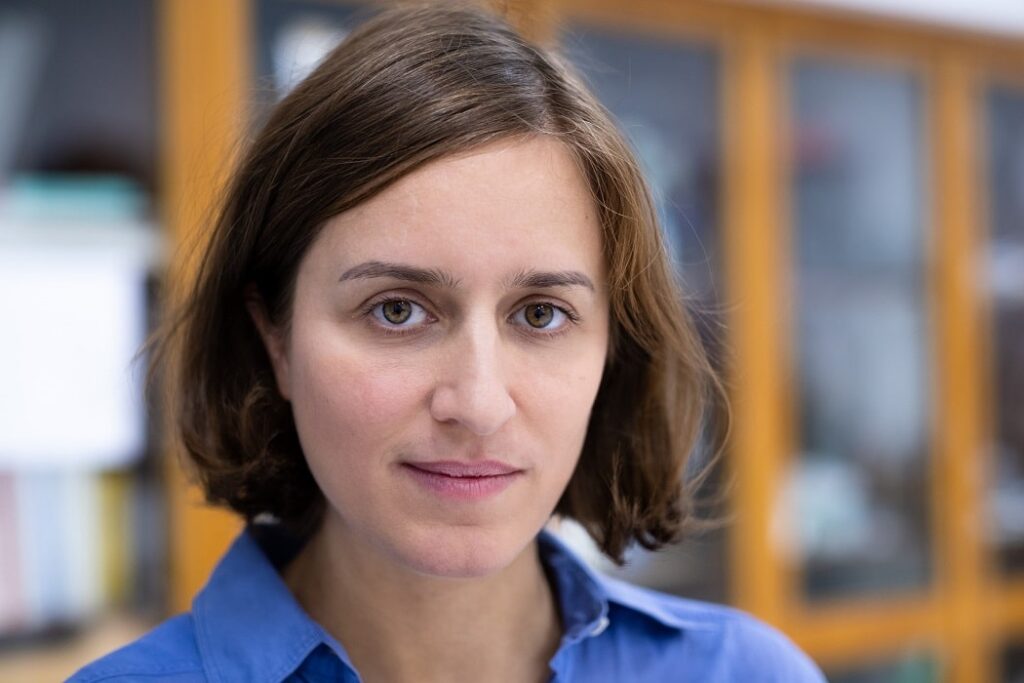
Renée Sintenis (1888, Glatz-1965, West Berlin) was one of the most successful sculptors of the Weimar Republic. In 1915 she exhibited for the first time at the Berlin Secession. Among her early patrons was the poet Rainer Maria Rilke. In the 1920s she was omnipresent in art and society and her Berlin gallery owner Alfred Flechtheim was able to sell many of her small-format animal bronzes to public and private collections. Sintenis counts – also due to her androgynous appearance and her height, which was surprising for the public at the time – among the most dazzling figures of the Berlin art scene of those years. In 1931, she was one of the first women to be appointed to the Prussian Academy of Arts. In 1934, she was forced to resign by the National Socialists due to doubts about her “Aryan” origins. After the war, she was appointed one of the first female professors at the Hochschule der Künste in 1947, and was readmitted to the Akademie der Künste in 1955. Sintenis was known as an animal sculptor, and her designs included the Berlinale Bear, a larger version of which welcomes travellers at the former Dreilinden border crossing, as well as in the north and south of the city. The artist was a model for Georg Kolbe. The Georg Kolbe Museum owns works by the artist and is in charge of a partial estate, as well as parts of her extensive photo archive.
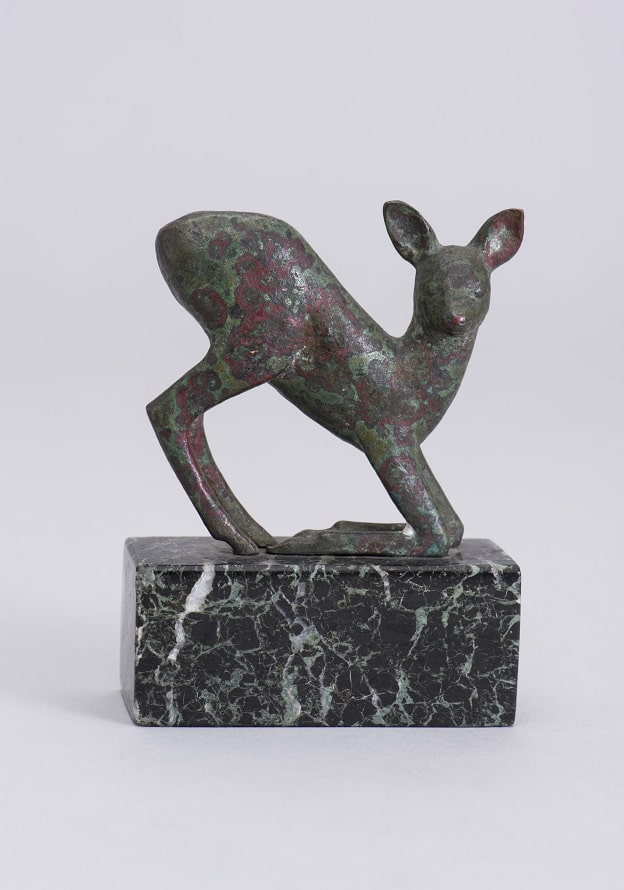
The Georg Kolbe Museum in Berlin’s Westend is located in the listed artists’ house of the sculptor Georg Kolbe (1877-1947), a unique factual, Bauhaus-influenced ensemble from 1928 with an interior sculpture garden. Founded in 1950 as a foundation for the development, preservation and mediation of Kolbe’s artistic legacy, the house today sees itself as a place of encounter, exchange and research. With exhibitions and educational offers on classical modernism and contemporary art, the museum promotes a lively dialogue that links historical questions with the present. The museum houses an important collection of modern art from Georg Kolbe’s circle and is currently concentrating strongly on coming to terms with the artist’s work during National Socialism. Research on women sculptors of the modern era is particularly important in the museum’s work. Other core topics of the museum besides the modernist period, its criticism and sculpture are dance and photography, as well as the architecture of the New Building. Solo exhibitions in the field of contemporary art in recent years have been dedicated to Leiko Ikemura (2023), Mona Hatoum (2022), Thomas Schütte (2021) or Lynn Chadwick (2019), among others. Exhibitions in the field of Classical Modernism included “Tilla Durieux. A Century Witness in Her Roles” (2023); “The Absolute Dance. Dancers of the Weimar Republic” (2021) or “Tender Men in de

Highlights from the supporting programme
Guided tours by curators in cooperation with the Museum of the Ancient Near East
05.10., 18:30 Dr. Helen Gries on the Vase of Warka (Uruk Vase) in the Vorderasiatisches
Museum
11.10., 18:30 Dr. Kathleen Reinhardt through the exhibition in the Georg Kolbe Museum
Reading and talk A declaration of love for the crow
19.10., 18:00 h, with Cord Riechelmann in cooperation with the publishing house Matthes + Seitz
Panorama series of events
The Panorama series creates connections between art and other areas of knowledge and experience.
fields of knowledge and experience.
12.10., 18:00, with Dr. Kathrin Herrmann, Animal Welfare Commissioner of the State of Berlin
09.11., 18:00, with Gregor Reinhardt, Organismendemokratie/organisms democracy e.V.
01.02., 18:00 Panel Ethics of the Human-Animal Relationship with Melanie Bujok,
social scientist, Dr. Friederike Schmitz, freelance author, and Prof. Dr. Bernd Ladwig, Free University Berlin
Curator’s tour with Dr. Kathleen Reinhardt
13.12., 17:00
Inclusive tactile tour for people with and without visual impairments
27.01., 14:00 hrs through the exhibition
Culinary evening with vegan dishes “Recipes from Iraq” based on the book by Lin May Saeed
14.02, with guided tours of the exhibition and menu at Café Benjamine
Further information at Café Benjamine: info@cafebenjamine.de; 030 23592503
Lecture at the Einstein Forum Potsdam
Postanthropocentric Art History(s). On the new way of dealing with animals in art
15 February, 7:00 p.m. with Prof. Dr. Jessica Ulrich, Kunstakademie Münster, in cooperation with the Einstein Forum, Potsdam
WHERE?
Georg Kolbe Museum
Sensburger Allee 25
14055 Berlin
WHEN?
Thursday, 14 September 2023 – Sunday, 25 February 2024
Wednesday to Monday 11 am – 6 pm, closed on Tuesdays
COST?
8 € (reduced € 5), free admission up to 18 years and for members of the Circle of Friends


